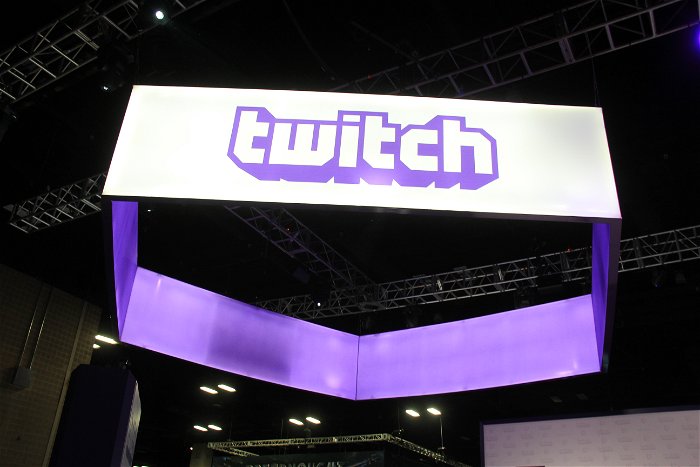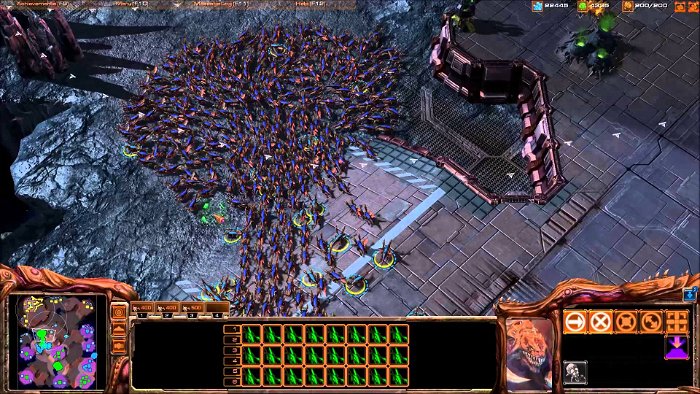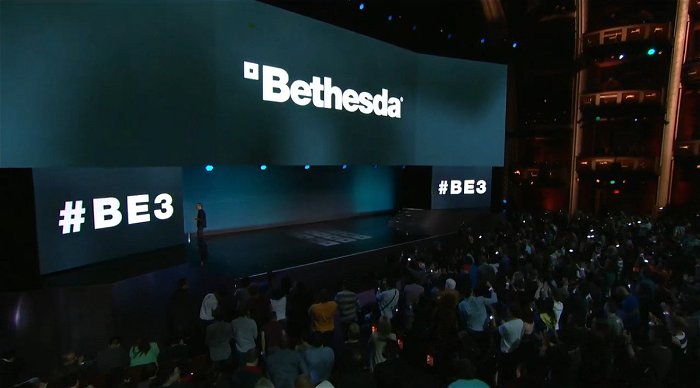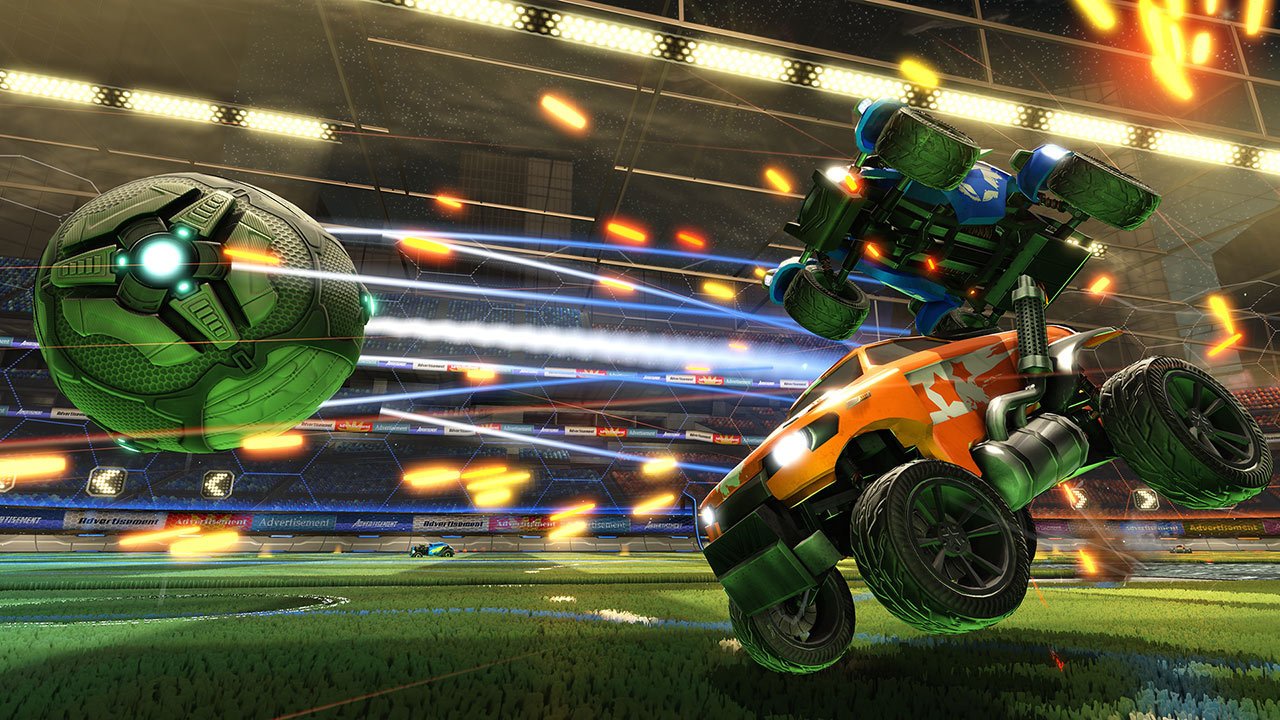Twitch started with humble roots, but it quickly became the powerhouse we all know and love today. Starting under the Justin.tv banner, Twitch was a way for players to stream games to people on the internet. When it started, this concept was new, but watching people play games is a notion stretching back to the early days in public arcades.
With Pax-East being such a community-driven event, Twitch has a very strong presence on the show floor. It brings Twitch celebrities to the stage and allows all the fans to get up close with the people they follow. It’s a unique environment, bringing the biggest of the online world to the public in a real-world setting. Few events beyond Twitch’s own TwitchCon, can offer the general public such an up-close view of what goes on behind the scenes at Twitch.

With the experience of the community and the fans fresh in my mind, I sit down with Chase from Twitch. Sitting in an open area of in the Westin Hotel, connected to the main convention center at Pax-East, we took our seats in the hotel issued chairs. We have little time before the next event of the night, so we dive right into a long discussion about the history of Twitch, what made it such a success and where it will go from here.
Chase: The history of Twitch began with Justin.tv. Justin.tv launched in 2007 and what it was for was filming Justin Kan’s life 24/7 and it ushered in the trend of life casting. He was on morning shows and it was a really cool novelty. Over time, however, the novelty started to wear off because when you broadcast yourself 24 hours a day, there’s down time spent eating and sleeping and people watching it began to want to broadcast their own lives. Justin.tv created the tools and opened up the platform so anybody could broadcast on it and then it became a general-purpose live-streaming site where you had weddings, sporting events, and cat cams—anything you can think of. One thing they didn’t expect was the fast, organic growth of video game content. One of the founders of Justin.tv, Emmett Shear, was a huge Starcraft II fan, so he was watching a lot of that content. They set some thresholds and he said ‘if we hit these milestones, we’ll spin it off into it’s own product’. They crushed every milestone, and in 2011, Twitch was launched.

There are a number of key milestones from the launch of Twitch to today. The first one was the launch of the partnership program. Of our 1.7 million broadcasters, 13,000 of them are currently part of the partnership program. It’s the best of the best. In part, it enables them to monetize their channels through several ways. The first is ads that run through their channel and the second is through subscriptions to their channel. Every channel is free, but with subscriptions you can get special perks to it like subscriber-only chat where only subscribers can be in chat and you can get special emotes which are a big part of the Twitch culture. The third way to monetize with us is through our partnership with Teespring and they create merchandise like t-shirts and hoodies. We made it so the broadcaster can put this right into their dashboard. All they need to do is upload an image and Teespring handles the rest. The beauty of it is that the broadcaster still gets a lion share of the profits. On top of that, once you’re a partner broadcaster, it opens up a lot of other incremental income doors, such as being sponsored, being part of influencer programs, so there are a lot of ways they’re bringing in money on top of the money we already provide. Even if you’re not part of our partnership program, there are a lot of streamers that actually broadcast full-time based on tips alone, so you don’t have to be a partner to be successful, but that’s where we offer additional ways to monetize.
The second major milestone comes on the heels of the fact that broadcasting from your PC is not easy. You have to be a little bit tech savvy, you have to understand capture cards and cameras, but even with those hurdles hundreds of thousands of people were still broadcasting to Twitch. When we integrated into the PlayStation 4 and the Xbox One, people could be up and broadcasting in under five minutes. As a result, 30 per cent of our broadcasting base is coming from a console and that really illustrated how easy and fun it could be and really help broaden people’s awareness of the streaming phenomenon.
The next big thing was being acquired by Amazon, up until that point, everybody in the gaming community was familiar with Twitch, but on a global scale, that opened up a lot of advertisers and other people’s awareness of Twitch, which put the brand on a whole other level.

CGMagazine: How do you find the platform has fared now that Google has launched its YouTube Gaming channels? Are they infringing on your audience, or have you remained solid?
Chase: If you’re talking about the Twitch audience, it continues to grow; our daily active viewership grew 20 per cent from January of 2015 to January of 2016, where it was 8.5 million daily active users. Now, in just this quarter, we moved up to 9.6 million daily active users. In terms of our growth, it continues to go on, but another part of the question you’re asking about is the competitive landscape and while we’re cognisant of what other platforms are doing, it really has no impact on Twitch because everything we develop is dictated solely by what our community wants.
We don’t say, “Oh platform A has this feature, we need to get that too”’ If our community says “hey, we want you to be HTML5,” then we focus on that. Our true north is always going to be what does the community want. Every decision made at Twitch is led by a broadcaster-first mentality, which is, if it’s good for the broadcaster, then it’s good for our community, then it’s good for us. That’s how the brand operates.
Back to my narrative of why are people watching; people have always enjoyed watching other people play video games, dating back to when the first consoles arrived. You had your Atari and one controller, so most of your friends and family spent time watching. This was even more pronounced in the arcades, where you had 15 people watching one play Donkey Kong or Pac-Man. It wasn’t until the ubiquity of broadband that enabled Twitch to exist and really tap into this part of our DNA that’s always been there. However, it’s much simpler than that: People enjoy watching others who are good at what they do, or are engaging with what they do when it involves a shared interest. Sometimes people ask me, “why would people watch someone play videogames? Wouldn’t they rather be playing it?” That’s like asking a chef “why are you watching the Food Network, shouldn’t you be in the kitchen cooking?” Or, “why are you watching ESPN, shouldn’t you be out shooting hoops instead?” No, people enjoy watching others that are good at what they do or are engaging with what they do when it involves a shared interest.

This whole spectator element actually goes back to medieval times where you have your knights and you have your jesters. The skilled players on Twitch are the knights and the entertainers are your jesters, so watching people play has already been part of our culture.
That’s not why Twitch is so sticky though. The average viewer spends 106 minutes per person, per day on our platform and that’s because it’s social video for gamers. What that means is it’s highly interactive; you’re not sitting there just watching, the broadcaster is talking to the viewer, the viewers are chatting with the broadcaster, and while the videogames might be in the background, the broadcasters are talking about their life, pop culture, even what they had for dinner. Twitch is essentially the social network for the gaming age.
CGM: What do you think of the rise of “Twitch Plays” and the merging of the two concepts?
Chase: I’ll get back to that later. The next question is what are they watching? Every major developer and publisher has a channel on Twitch; even all the major gaming media outlets have channels, like IGN, Gamespot and Games Radar. They all have Twitch channels because they can embed our player on their sites so they can bring live content to their readers. All of the major game conventions broadcast on Twitch and that’s important because there are so many barriers to entry. Take E3: it’s industry only. PAX Prime sells out in minutes. And then you’ve got Tokyo Game Show in Japan and Gamescom in Germany. Twitch brings all these conventions right into our users’ houses.

The next category is e-Sports, and while it’s only part of the content on Twitch, we are the biggest player in town and we continue to drive the trend. Before Twitch came along, e-Sports was really fragmented and localized. We’ve put a global spotlight on it and created awareness and helped grow the community. There are a lot of things we’re doing right now with e-Sports and in addition, we’re working with a lot of brands with strategic partnerships to help grow the sport and bring it to the mainstream. For example, we’re working with Psyonix for the Rocket League Championship series.
The last category should have been the first one because this is the biggest most popular category on Twitch and that’s all the user-generated content. This could be one person broadcasting to ten or a hundred of their friends or a huge subculture like speedrunning. That brings us to where do we go from here? First, we’re global, which is very important to us and we want to make sure the quality of the service and the experience is the same no matter where you are in the world. What this means is building data centres around the globe, more infrastructure, growing out our partnerships teams so we can onboard more and more people from different countries and making sure the languages are localized and doing events. A big part is being part of every major convention in these different countries and meeting the community face-to-face at our booths, but we’re also bringing the local broadcasters on stage so we can give them a piece of the global spotlight.
The other thing we are focusing on is our Game Developer success program, which is the idea of working with developers to integrate Twitch into their games at the beginning, rather than an afterthought. We also think about how to leverage our community in general. Part of that are these games called “stream first games”. These are games that have Twitch built in on the onset as opposed to Twitch Plays games where someone takes an already existing game and finds a way to tinker with an API so chat can control that. They are two different types of experiences, but both of them are really welcome.

CGM: Because you rely on third-party software, is there any chance Twitch will develop their own software in the future that lets players plug and play/stream?
Chase: I think that question has been brought up before and I don’t know where it stands. Our engineers work on a lot of things, things I can’t talk about, things I don’t even know. This could fall under both of those, but it’s something that is definitely not foreign to us.
One thing to understand about Twitch, and it’s what makes us a successful brand, is half our staff is actually hired from the community. So when you’re working with speedrunners, we have a rep for that community who was a part of it, or if there is a rep for DOTA or League of Legends, those reps are part of that community. So when there are issues within our community, pains in the community they might feel, it’s not something foreign, our reps who use the same platform as our users share the same concern. There are very few problems that we don’t know about. The thing that is great about our community is the ideas that they come up with that help us fuel our creativity and innovation.

CGM: In terms of people wanting to get in on Twitch, what’s the incentive for new streamers to get on the platform? How do they get noticed and grow?
Chase: There are a lot of best practices for that. There’s certain things like broadcast regularly, create a schedule, have a set time, find a game that you excel at or maybe find a game that people aren’t aware of. It’s like we say, you can be the best gamer in the world or you can be the worst gamer in the world and you can make a living on Twitch if you know how to engage your audience. Find out what you can bring to the table. A lot of it is finding your own voice and there’s no magic bullet, no single way to success on Twitch. The people who say that you just have to be attractive or be a girl on Twitch are stories made up by people who have not spent much time on our platform.
TwitchCon is a huge thing for us too. This will be our second TwitchCon and in the first day we sold double the amount of tickets as we did last year—that’s huge. We talked about the competitive landscape, we’re always constantly iterating on our platform, but one of the areas that differentiates us from what our competitors are doing is that we’re all about the social features and community and we actually announced a couple today, including friends for Twitch. We’ve always been 1 to 100 with broadcasters talking to their viewers, but now the users can interact with each other one-to-one, you have a whole friends list, we just announced this literally 30 minutes ago. Another thing we announced was ad-free subscriptions. Our partnered broadcasters can offer to their subscribers ad-free service, it’s opt-in, I don’t see why they wouldn’t, but it’s their option. So those are just some examples of how we’re evolving Twitch into a social platform and that’s something you don’t get from other streaming sites. Viewers tell us about features other sites are offering and ask why we don’t incorporate them, but those features aren’t heavily used on those sites and they never get the same amount of viewership that Twitch does daily.

CGM: What’s your background in the games industry? How did you get involved with Twitch?
Chase: I’ve been involved in the games industry since 99’ when I was first brought on board at my PR agency at the time to launch the Sega Dreamcast. Before that, I was a game reviewer and probably the first one to write game coverage for a woman’s magazine. At that time, I was a freelance writer while running for a record label and I did that for 10 years because I wanted to get free games and music. That’s why many others and I got into games journalism, but nobody makes a living at a majority of game sites and then we realized we can’t afford to get a house or raise a family so I’ll go into video game PR. I’ve worked on a number of games including Bioshock 1 and 2, Epic Mickey, Bayonetta and last game I was worked on was The Last of Us. At the same time of doing PR for these things and while dealing with my two clients, we were hired to help launch Twitch. So I was working on both PlayStation and doing most of the PR for Twitch by myself because I took the lead on that. I saw where the company was headed and I thought they were really passionate so I had a choice to make. I never wanted to go in-house unless I found a product I could be passionate about and If I wanted to go to a place I had to think of a career to support my family and a place where I could finish my career. I took a major pay cut to go in-house at Twitch, but over the last three years of being there, we’ve seen a great amount of success.

We just hit 500 employees and I was there before we even hit 100. So when you talk about passion, this is something I feel very passionate about and I like to convey that passion when I talk to press because most of them aren’t part of the Twitch community. I also encourage the media to go hang out at our booth and you’ll see that everybody loves Twitch and the broadcasters because even the biggest broadcasters will hang out with their fans, smaller broadcasters, there’s not a lot of hierarchy there in terms of how people socialize. Even among staff, we love meeting everybody, I won’t show preference for one person over the other. We know that it takes everybody to help make Twitch work and there’s a genuine appreciation for them in the ecosystem. We’re not a brand that’s scared of any questions. We may not have every answer, but we’re not a brand that hides behind any walls when it comes to our community. We want to know what bothers them, what features they want, and how we can help them because that’s the only way we can be successful is by listening.




